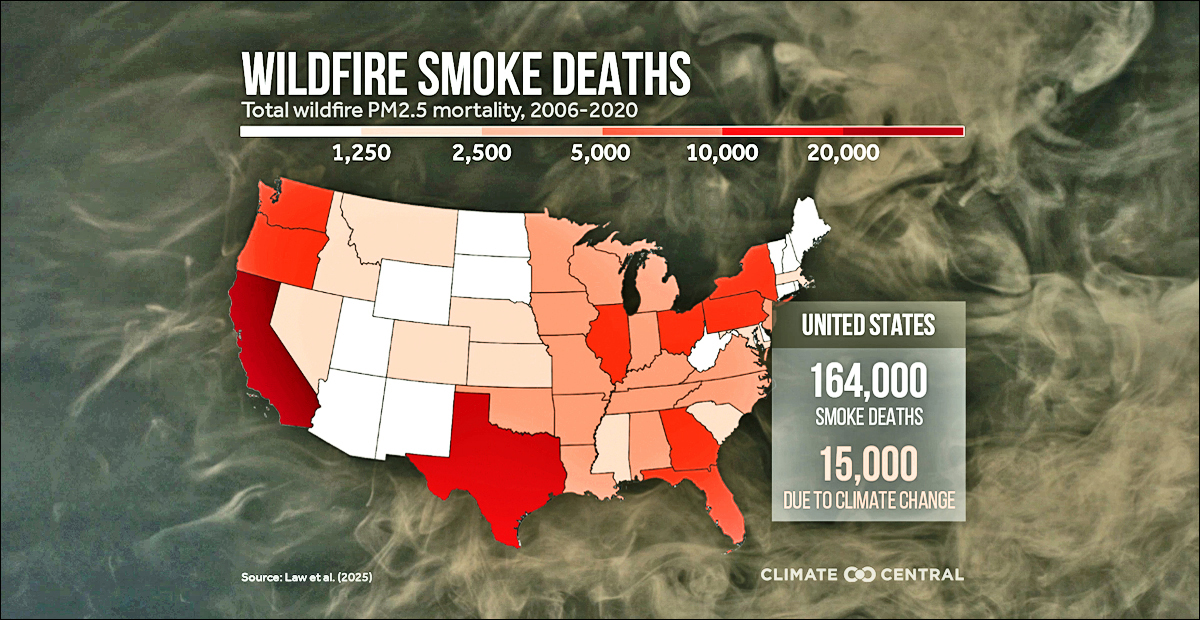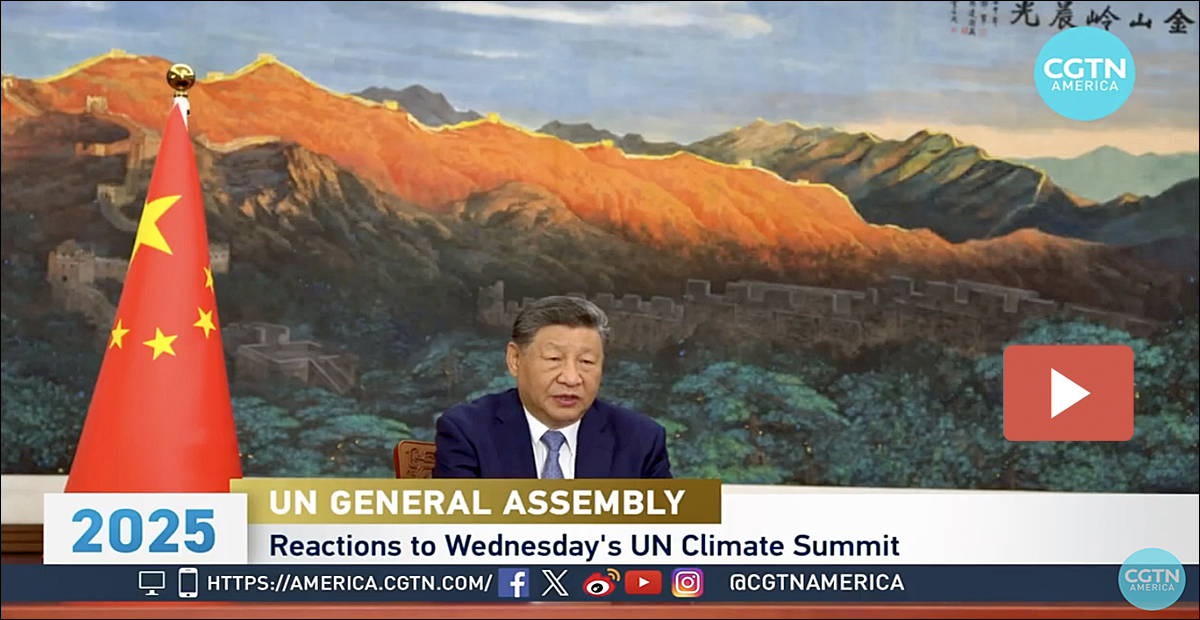Dear Friends,
In September at the United Nations’ General Assembly, President Trump called climate change the “greatest con job ever perpetrated on the world,” exhorting countries to turn away from renewables and use more fossil fuels. On the same day, Secretary of Energy Chris Wright called on the world to join with the U.S., Iran, Libya, and Yemen in rejecting the Paris Agreement. At home, the administration announced a new initiative to invest millions to revive the mining and burning of coal.
At the same UN meeting, China announced its updated pledge to reduce emissions by 7-10% by 2035, continuing its blitzkrieg buildout of clean energy. This historic investment in clean energy has already led to a small decrease in China’s emissions in recent months, a major milestone for the world’s largest annual emitter. Earlier, China reaffirmed the importance of the Paris Agreement and called for greater international cooperation to address climate change.
Meanwhile, across New York City at Climate Week, the talk was less about policy and more about energy demand and security. After a decade of flat consumption, U.S. energy demand is expected to increase dramatically, in part to meet AI’s voracious power needs. Existing natural gas facilities will continue to play a starring role, but building new plants has gotten much more expensive due to multi-year backlogs on orders for new natural gas turbines and from tariffs. The new energy “darlings” – nuclear, geothermal, and fusion – are promising, but are also currently very expensive and have long runways to get to market.
The cheapest and quickest way to meet this ratcheting demand is to expand renewables and storage, upgrade our grid, ramp up energy efficiency, and create decentralized energy systems. Yet the administration, with its fossil-fuels-first and anti-renewables agenda, is slowing progress.
It all seems a bit topsy turvy: China is emerging as the climate hero while the U.S. is increasingly labelled a climate pariah. Clean energy, once a “green dream,” is now an economic imperative. Fossil fuels, historically considered the only way to lift poor countries out of poverty, are now eclipsed by clean energy that can increasingly provide those same benefits – and do so without the ancillary costs to health, environment, and climate, and while providing developing countries with more energy sovereignty and resilience.
As I’ve said before, the times are a’changing. We’d better not be left behind.
Sincerely,
Kathleen Biggins
Founder and President
Notable Quote
“Green and low-carbon transformation is the trend of our times. Despite some countries going against the trend, the international community should stay on the right track, maintain unwavering confidence, unwavering action, and undiminished efforts.” – Chinese President Xi Jinping
News of Concern
While the powers that be argue over policy, Mother Nature is doing her thing – sending temperatures spiking and wildfires burning. In fact, wildfire smoke is now projected to be the most expensive climate risk by mid-century, harming more Americans than any other climate threat. It already kills more than 40,000 each year, with small-particle pollution infiltrating our lungs to reach our bloodstream, causing inflammation and disease. By 2050, we will see a lot more smoke, which means going outside for an evening walk, a hike, or a game of tennis could be a lot more dangerous – not to mention impacts on outdoor workers who by definition spend hours each workday outside.
And it’s not just our outdoor time that is in jeopardy. Wildfire smoke is already changing the flavor of our wine, with Napa Valley wines especially at risk this year after an active fire season. Compounds from the smoke can change the flavor, adding an ashy or cigarette flavor that signals that the wine is “smoke-tainted” and reduces its market value.
Climate change is also impacting our water – specifically the ocean currents responsible for bringing warmth to Europe and influencing rain patterns around the globe. A new study this month shows parts of the Gulf Stream could begin to collapse earlier than thought – potentially by 2060. This has been a concern for a while but it was assumed to be a far-off threat. We know that climate changes have switched this current on and off in the past and that it radically changed temperatures and precipitation patterns in Europe. This is a tipping point we don’t want to cross.
The dangers of climate change were also highlighted in a report from the National Academies of Science, Engineering, and Medicine that stated the evidence for current and future harm to human health and welfare created by human-caused greenhouse gases is “beyond scientific dispute.” This is a direct rebuke to a hastily written and error-filled Department of Energy report that downplayed climate change risks. The EPA is using the DOE report as fodder in its proposal to roll back the 2009 endangerment finding, removing this important legal underpinning from federal climate policy in a way that would also bar future administrations from taking action. Pushback from the scientific community has been fierce, and the group that wrote the discredited DOE report has been disbanded, but the EPA still appears to be moving forward to rescind the endangerment finding in December. As part of the same action, the EPA also proposes to repeal the 2024 standards to reduce pollution from cars and trucks.
News of Hope
If our News of Concern leaves you downhearted, we have one prescription: attend Climate Week in NYC next year. You will leave energized and hopeful after being exposed to so many bright entrepreneurs with new ideas and technologies. From grid enhancement technologies that enable us to get more energy out of our existing poles and wires, to sediment transfer that boosts sinking marshlands, to using undersea volcanic microbes to make “petrochemicals” from agricultural waste, the concepts on display showed creative solutions to a wide range of climate challenges. Human ingenuity is exhilarating!
One major theme: fusion – the power created by stars – is finally coming within reach, underscored by the announcement last month that the Italian energy company ENI had pledged $1B to a U.S. startup for fusion energy on the grid in the 2030s. This clean, abundant, “available 24/7” power has long been considered the holy grail of new energy, and it is getting a lot of support from private investors as well as the Trump administration.
Another key theme: storage. Batteries are becoming ubiquitous, their plunging prices allowing them to play a major role in stabilizing the nation’s grid and enabling renewables to pick up more of the load. Reports show that solar and batteries are making the Texas grid much more resilient against heatwaves and outages, and that these clean technologies are now much cheaper than building more natural gas plants. And in fire-prone areas like California, stand-alone microgrids of batteries and solar are providing energy to hard-to-service communities. These new microgrids do not need the grid connection poles and wires that have repeatedly ignited wildfires, so they provide a more stable and secure energy source.
And perhaps the biggest theme of all: solar is growing internationally at breathtaking speed, up 64% in the first half of this year versus the first half of 2024, driven by China’s rapid scale up. Importantly, solar costs continue to drop significantly, making it the lead horse for future energy additions around the world, even in developing countries where most of global economic growth and energy usage is predicted. China is also exporting cleantech at a blistering rate – expending more than the U.S. did in the Marshall Plan after WWII – helping developing countries access clean energy and increase their economic growth.
India, the world’s third largest emitter, is also ratcheting up manufacturing and use of solar. A solar plant in India costs 50% less than building a coal plant, and this economic reality is pushing the nation to develop manufacturing that might challenge China in the future.
While the U.S. is backtracking, with our solar growth slowing due to the administration’s efforts, installations in early 2025 were still near record highs. The companies responsible for power-hungry AI centers – like Google and Microsoft – have deep pockets and continue to commit to decarbonization goals. This is forcing and funding innovation and challenging our antiquated utility system.
So, what is more powerful? Ideology or economics? Will the President’s aversion to clean energy and inclination to support fossil fuel interests be able to counterbalance the new economic realities of the energy supply? Stay tuned. It’s going to be an interesting ride.
Notable Graphic

We have been breathing in “record levels” of wildfire smoke, which is endangering our health – and causing a spike in related, premature deaths, according to Climate Central. Smoke can spread hundreds – even
thousands – of miles from the site of a wildfire, putting millions of people at risk even when they aren’t
near the blaze.
Notable Video
Sourced: CGTN America
Despite U.S. backtracking on climate goals, world leaders reiterated their commitments to reducing carbon emissions during the September United Nations General Assembly in New York.



